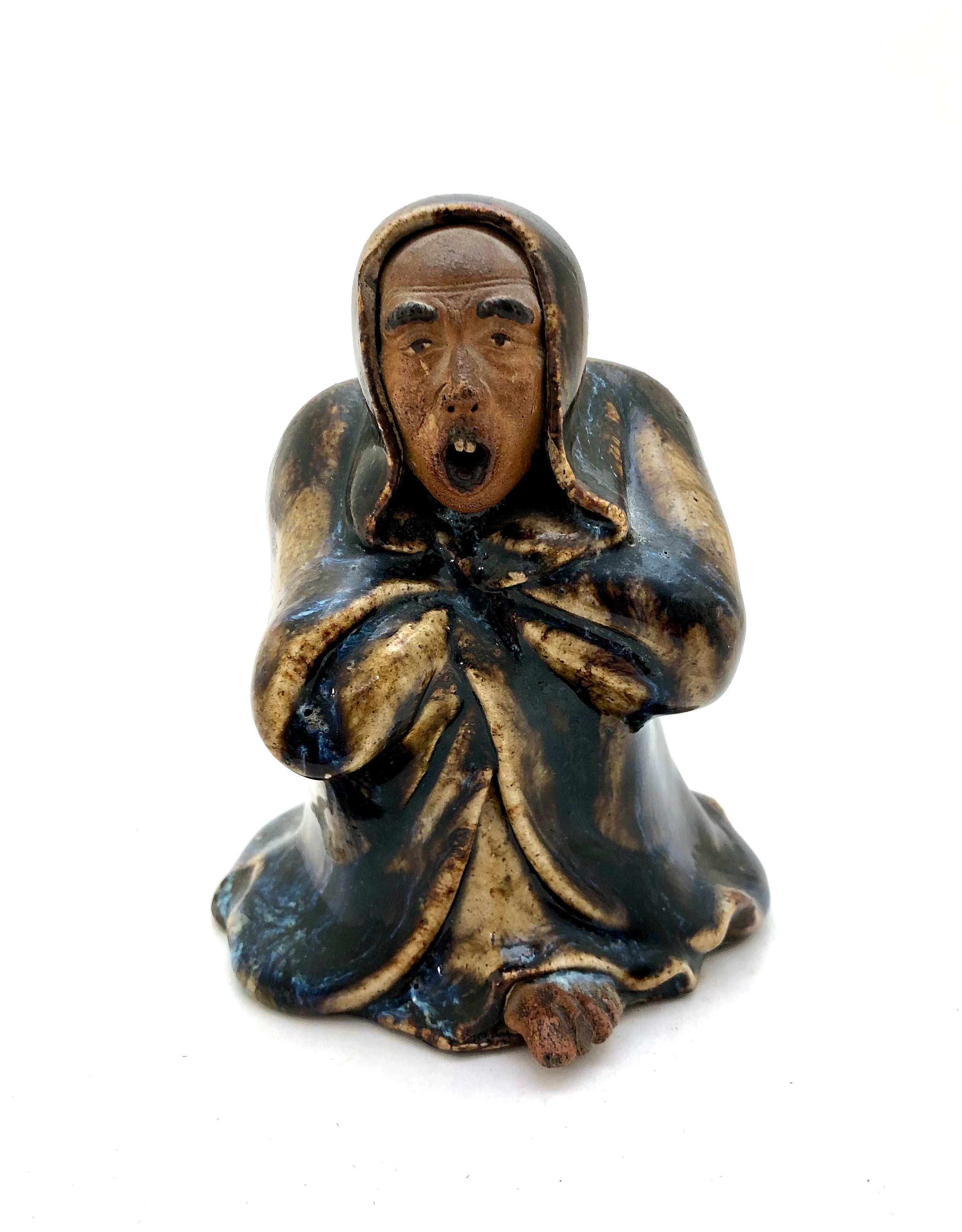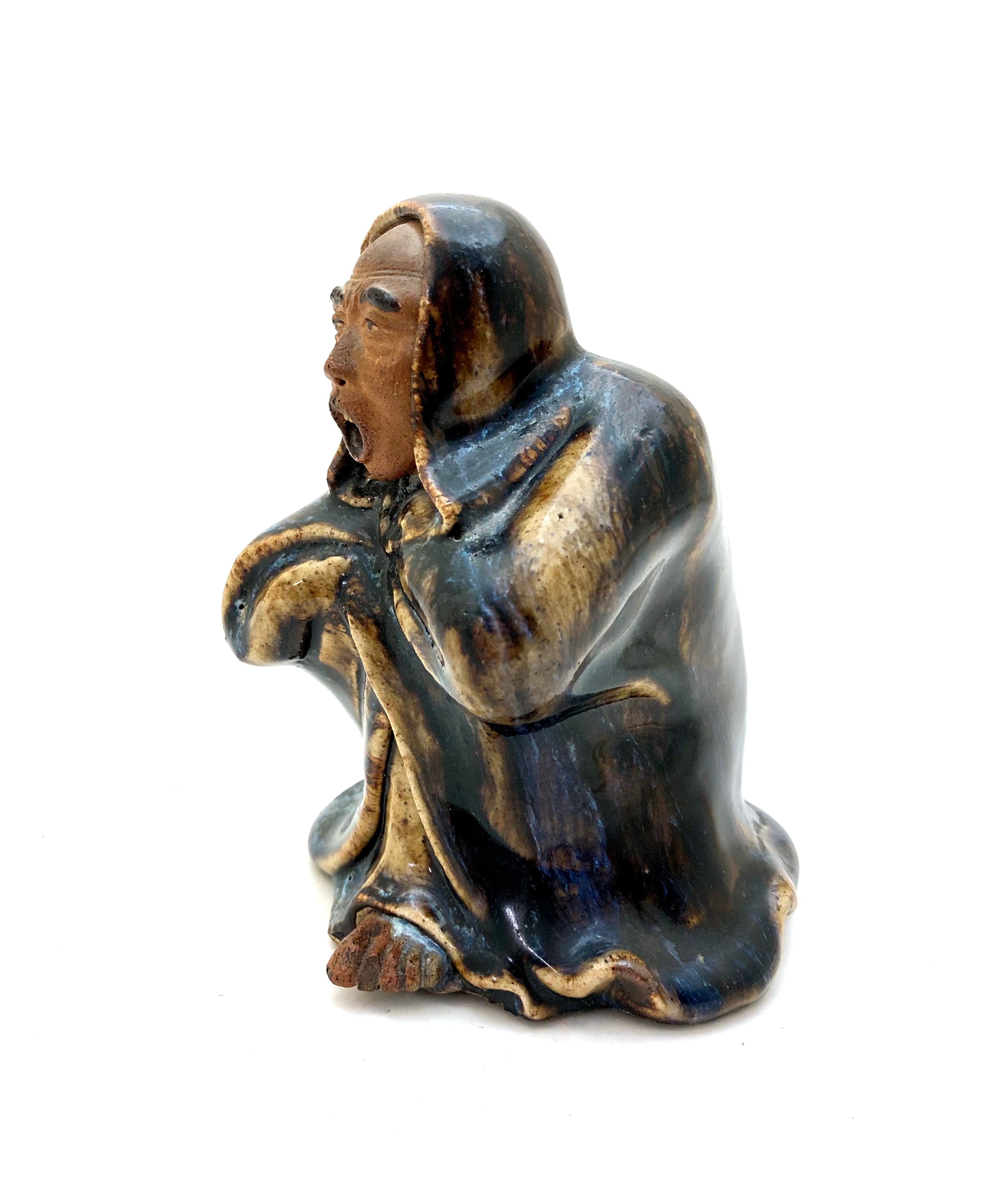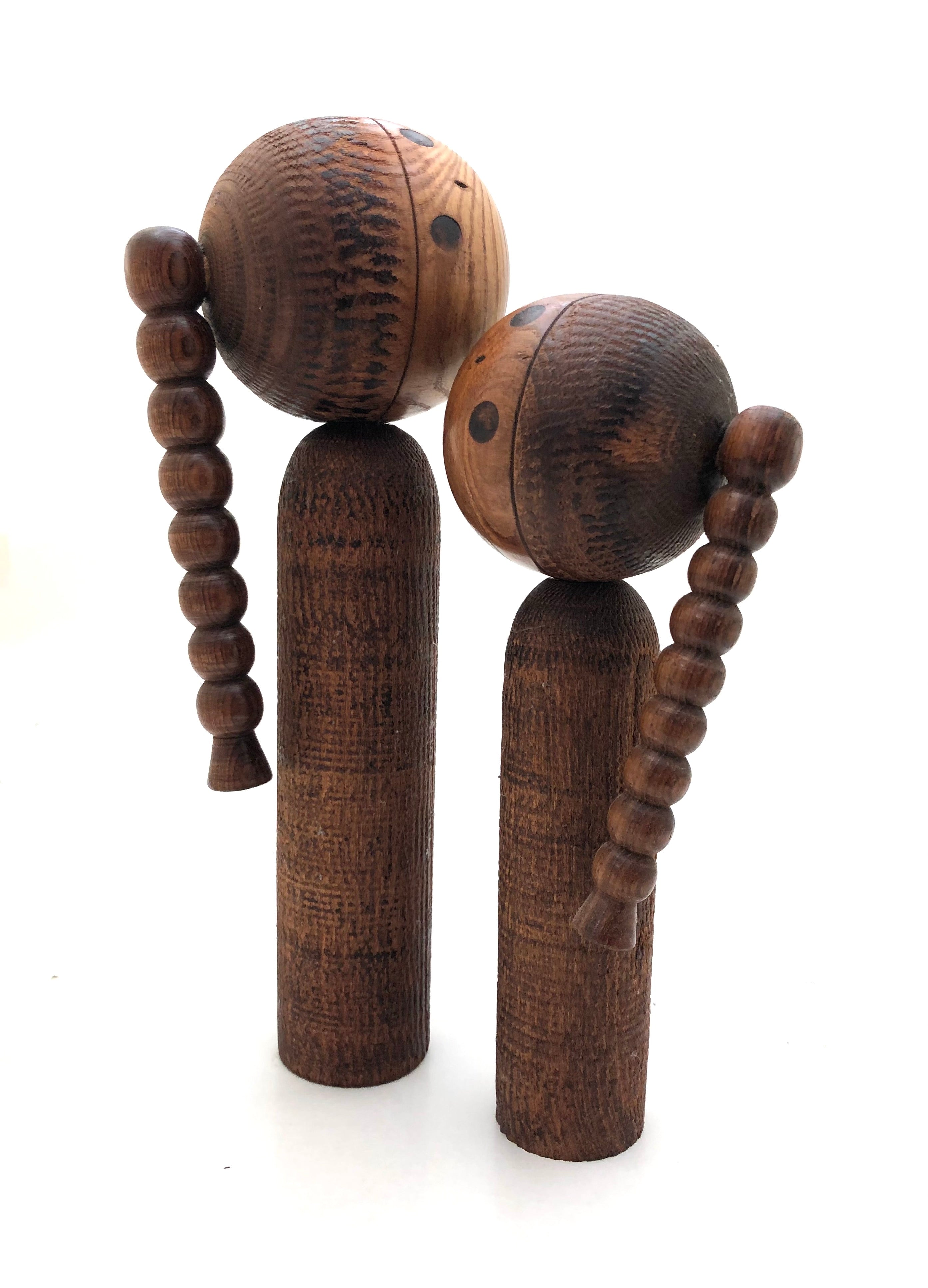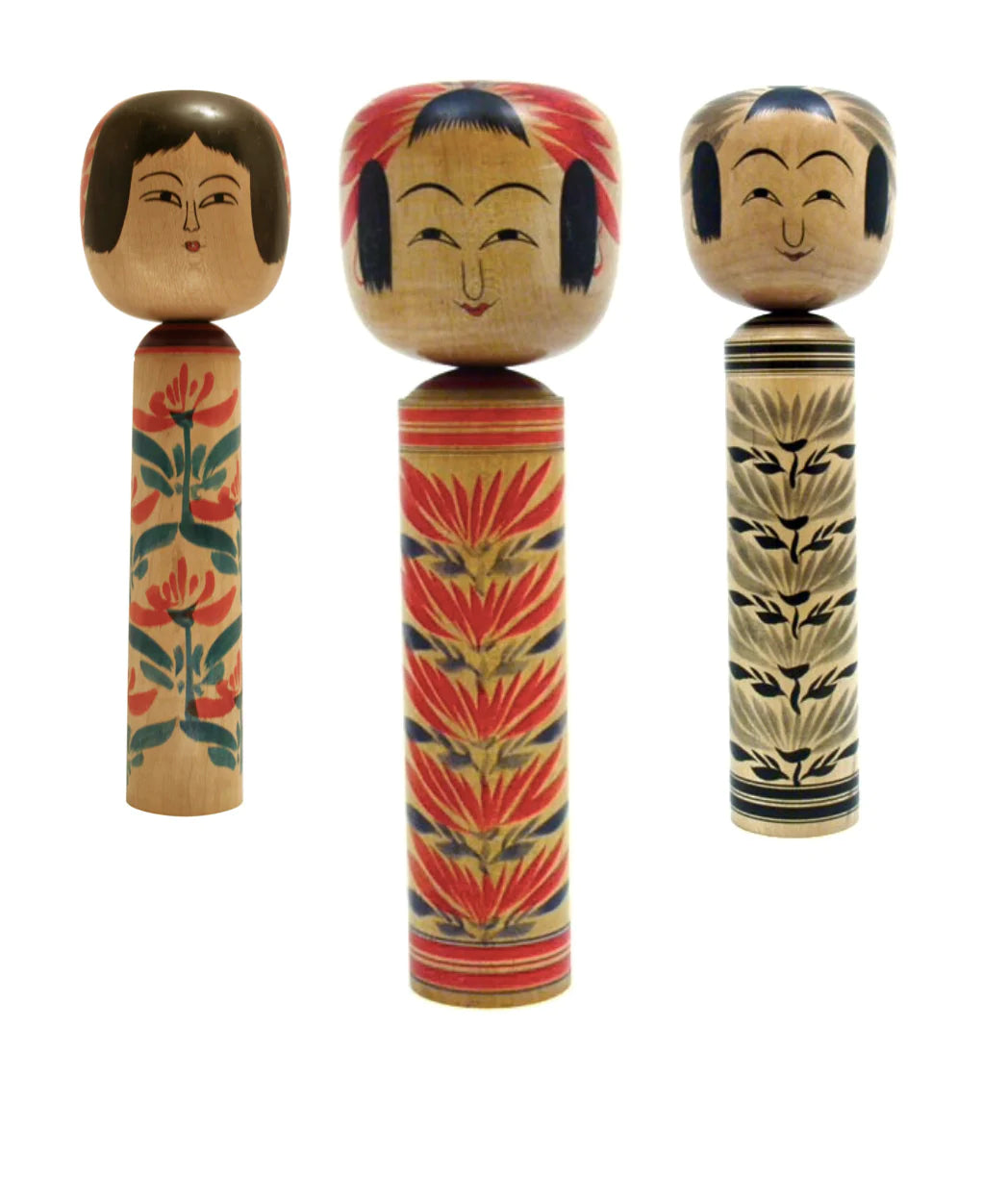



Antique Chinese Republic Shiwan (Shekwan) Pottery | Yawning Bodhidharma
Dimensions: 4-1/4”w x 5-1/2”h
Shown is a yawning Bodhidharma representing his long periods of meditation and captured in a humorous mud figure. His wide-open mouth, and teeth are prominently displayed with wild and crazy eyes as he encourages his followers to “press forward”, for enlightenment is not far off. His robe that covers his head is in a mottled ochre blue glaze. The only exposed portion of his body is his unglazed head, which is very expressive and detailed, and his exposed foot. The piece has no impressed stamp and was made between 1890-1919. This piece is from the Estate of Rudolph Schaeffer, (1886-1988) who headed the School of Art & Design in Chinatown & Potrero Hill San Francisco which closed in 1984. He had an extensive collection of Chinese artifacts and particularly Shiwan Art pottery. Because of its age and rarity, few are found in museums outside of China, and most are held in private collections in both that country and abroad.
A yawning Bodhidharma represents his long periods of meditation and is captured in a humorous clay figure. It can be humorously interpreted that Bodhidharma was awakening from a long sleep or yawning in hunger for food. Bodhidharma settled in Song Mountain in Henan Province, the site of the Shaolin Temple, where he spent nine years practicing meditation in a cave nearby. A favorite subject matter of Shiwan potters, Bodhidharma was an Indian Buddhist missionary of royal descent who reached the Guangdong sea and preached the Buddhist scriptures in Foshan, in A.D. 526, becoming the first patriarch of Chinese Buddhism. In the Quin dynasty, when China, was ruled by the foreign Manchu government, Bodhidharma became even more popular in Shiwan as the founder of the Shaolin branch of martial arts, which was practiced in Guangdong in preparation for the overthrow of the Quin.
Condition: Excellent meaning that the piece retains its original craft/workmanship showing a wonderful-developed patina commensurate which suggests a degree of wear that corresponds to its vintage and meets all the standards of the collectible Shiwan ware. No discoloration, chipping/cracking, surface wear, or structural damage.
Additional Information: As an important part of Chinese traditional culture, ceramic wares have a long history reflecting the customs of this ancient culture. One of the most famous types of ceramic works is called Shiwan (Shekwan) ware, which has been the shining star in Chinese folk ceramic art as early as the Tang and Song Dynasties (618-906AD), and which flourished in the Ming and Qing dynasties.
Chinese Classical Shiwan ware is a type of traditional pottery that comes from the talented artists of a small town located in the south of China called Shiwan, in Foshan City, famous for its culture and pottery. Here craftsmen are well-known for their glazing techniques and unique forms. All the sculptural work is hand-formed, and sometimes involves numerous family members within a village, while directed by a master craftsman, every object is unique, and therefore, a limited edition, which attracts art collectors the world over. The three largest collections of Shiwan Art Pottery are housed in the Hong Kong Fung Ping Shan Museum, and the Chinese Cultural Centre in San Francisco.
Original Shiwan figurines, (1880-1940), are extremely rare because of their art/craftsmanship and their delicate, fragile nature. The greater the detailing, the more likely the figure has been made by a master artist, hence the higher value. Also the larger the piece the more valuable, (8-0” or pieces over 20.0” tall) are extremely rare. The age of Shiwan ware can be verified by the markings, or lack of markings, the fact that they are hand-formed, depicting highly expressive figural forms and vivid imagery; primitive in sculpting techniques; the decorative elements associated with the figure; the deep rich glazes infused with the piece; the type of regional clay (sandy, coarse clay is the oldest), and the stylistic differences. Finally, pieces signed or stamped by the artist/craftsman are rare. The oldest Shiwan pieces, prior to 1890, will not have a signature or stamp.
Return Policy
Our antique/vintage pieces are identified/described and professionally photographed, and considered, “as is”, therefore all sales are final. Read our full refund and return policy.


